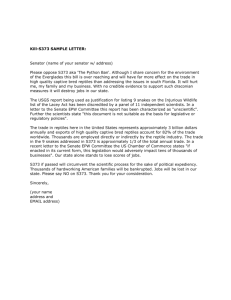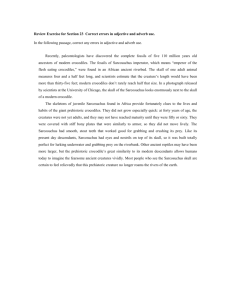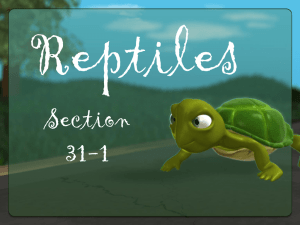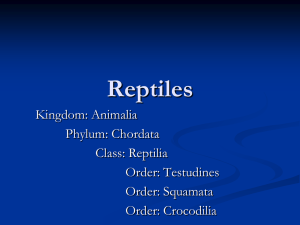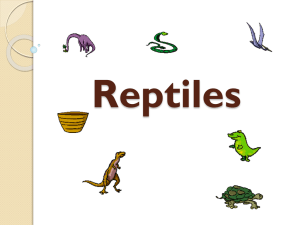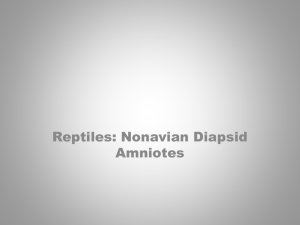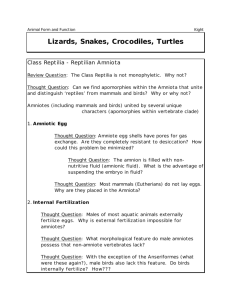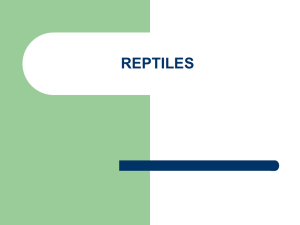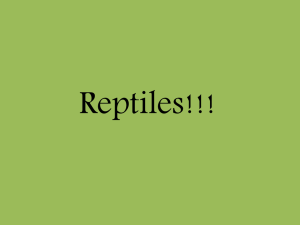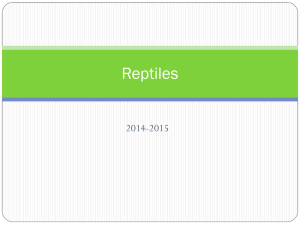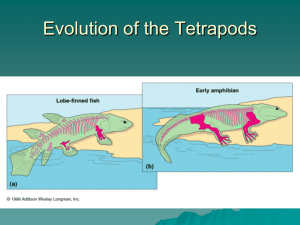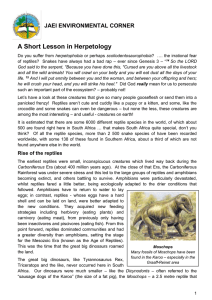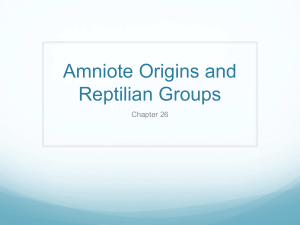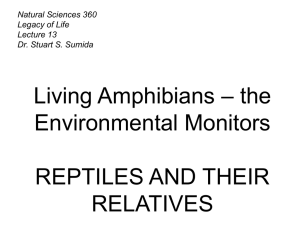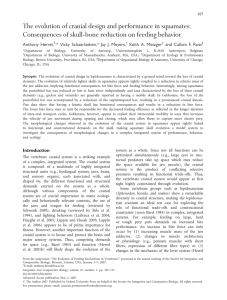Reptiles Ch. 26
advertisement
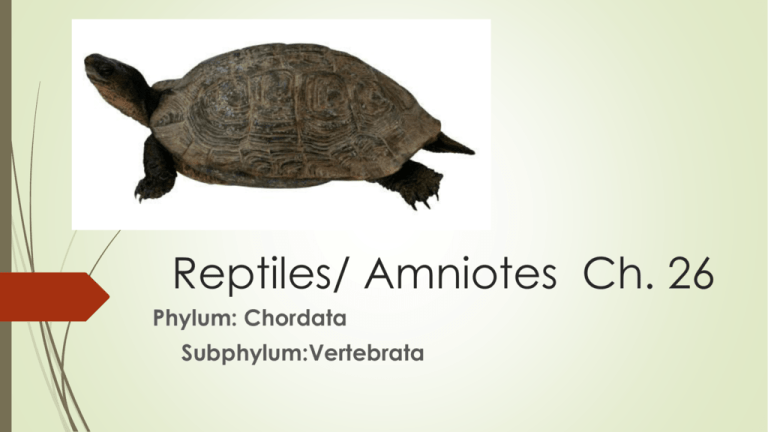
Reptiles/ Amniotes Ch. 26 Phylum: Chordata Subphylum:Vertebrata Order Testudines Rhynchocephaili a Common Turtles example and tortoises Tuataras-found only in New Zealand Squamata Crocodilia Lizards, Alligators snakes, and and worm crocodiles lizards Different Orders of Reptiles : small group work Order: Chelonia, Order Rynchocephalia, Order : Squamata, Order Crocodilia Examples Digestion Respiration Skin Skeletal system Circulatory system Movement Reproduction methods Unique Characteristics for that group Digestive System Complete Carnivorous Have a secondary palate that allows them to breathe while their mouth is full. Snakes :the upper and lower jaws are moveable on the skull and can move independently. Like the fish and amphibians, reptiles have a cloaca. Respiratory system: Adult-lungs Lack a diaphragm so inspiration and expiration are controlled by contraction of the thoracic (chest) muscles. NO cutaneous respiration Negative pressure breathing skin Thick and dry Covered with epidermal scales Scales contain keratin (a protein that helps prevent water loss) External Anatomy and Skeleton Ossified (hardened) to support locomotion on land Snakes and lizards have the temporal arch on the skull reduced or absent Turtles have a dorsal carapace (shell) to which the ribs are fused Circulation: Double looped; systemic=to the body pulmonary= to the lungs Three chambered heart: 2 atria and 1 ventricle Crocodiles have a 4 chambered heart Temperature Regulation: Ectothermic Often bask in the sun Nervous System Cerebrum: slightly larger than amphibians, associated with improved sense of smell Cerebellum with optic lobes: slightly larger than amphibians, associated with improved sight and motor coordination Medulla oblongata: regulates heart rate and respiration Sight: most have binocular vision which allows for depth perception, Tuataras have an additional parietal eye (a photoreceptor) located mid-dorsally on the head. Nervous System- continued Nictitating membrane to protect eye Hearing: not their most developed sense Smell: have an olfactory receptor in the mouth used to sample airborne chemicals called Jacobson’s organ. Excretory System Have metanephric kidneys (contains many more bloodfiltering units called nephrons). Nitrogenous waste in the form of uric acid (paste-like). Reproductive System Dioecious and oviparous (lay eggs) Internal fertilization: Copulatory organs Lay amniotic eggs Differentiates reptiles, birds and mammals from other vertebrates have extraembryonic membranes: amnion-fluid filled cavity for cushioning the embryo chorion-gas exchange surface resistance to water loss allantois-metabolic waste stored yolk sac-food shell-protection Amniotic Egg= has food supply for embryo, laid on dry land 4 main parts to Amniotic Egg Amniotes- Reptiles, Birds, and Mammals Allantois- respiration/ excretory/ storage for excretory Yolk sac- nutrition Amnion- protection Shell- protection Skull subclasses lizards, snakes, crocodiles and tuataras, have upper and lower openings in the temporal region (yellow) of the skull, shows relationship to birds. : Diapsid: Anapsid: turtles, lack openings in the temporal region (yellow) of the skull. . Synapsid: alligators, have a single opening in the temporal region of the skull, shows relationship to mammals
